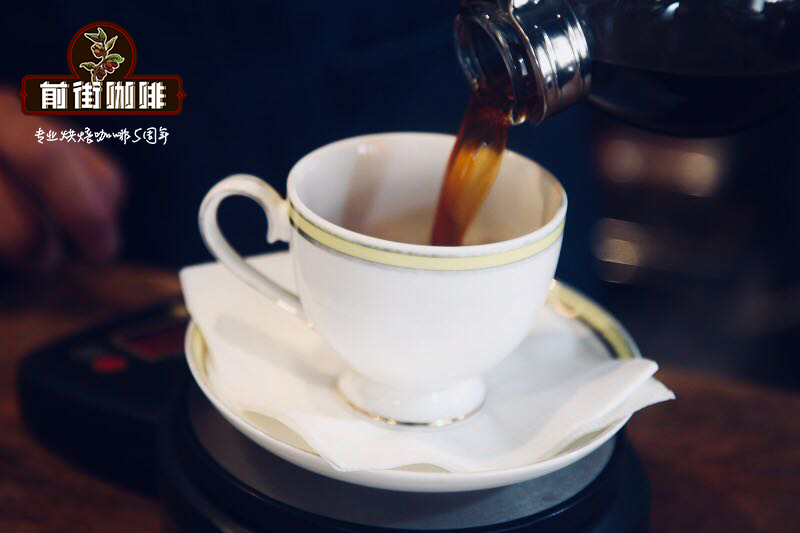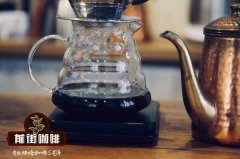Brazilian coffee Brazilian bourbon Santos Bowbon coffee beans.

Professional coffee knowledge exchange more coffee bean information please follow the coffee workshop (Wechat official account cafe_style)
Brazil grows Arabica and Robusta, but mainly Arabica, most of which are dried. Both the equator and the southern line of regression cross Brazil, so the Brazilian landmass is located in the tropics, with about 8 million hectares of land used to grow coffee. Robusta is planted in areas facing north, where the climate is less hot and the plain is flatter, to avoid more direct sunlight.
The quality of coffee improves as you go south, and the best Arabica is grown on the higher plains, but these plateaus are close to the edge of the tropical zone, and frost damage is often a destructive problem, if not a major disaster. When a frost warning is issued in southern Brazil, the price of international coffee trade soars in response to expected shortages.
Brazil's Arabica is not usually included in the gourmet grade or professional coffee rankings. Indeed, when experts are forced to compare and make general descriptions of very different varieties, most of them will say that Brazilian coffee is of medium quality, low to moderate acidity, light or tasteless. This is a fairly accurate overview of most of the tens of thousands of beans exported from Brazil. The quality problem is partly due to Brazil's wide area to allow large-scale planting, harvest is no longer "harvesting" at all; it may be "stripping" or even mechanical harvesting. Either way, the mixed plant fruit diet includes a wide range of mature coffee fruits, and it is likely that subsequent classification will not produce a truly equal rate of return.
The best Brazilian coffee comes from young trees of the bourbon < bourbon > variety, whose small, round beans produce the best coffee, with fine acidity and sweetness. When the Brazilian bourbon number is harvested several times, the coffee beans become larger and lose some flavor; the coffee bean cup is called "flat Santos" < flat bean Santos >.
Brazilian coffee once accounted for 60% of the world's output and was the standard "additive" for almost every kind of blended coffee in the world. Interestingly, the International Coffee Organization's preliminary statistics on the 1998 harvest listed the average "unit price" of Brazilian exports at US $110.95 per pound, which is very close to the world average price of 110.05 cents per pound of coffee.
Important Notice :
前街咖啡 FrontStreet Coffee has moved to new addredd:
FrontStreet Coffee Address: 315,Donghua East Road,GuangZhou
Tel:020 38364473
- Prev

In addition to Cuban tobacco, Cuba also has Cuban coffee.
Professional coffee knowledge exchange More coffee bean information Please pay attention to coffee workshop (Weixin Official Accounts cafe_style) The cultivation of Cuban coffee can be traced back to 1748, but the economic benefits are not as good as tobacco, so it is not as common as tobacco, and its popularity is lower than Cuban cigars. The best coffee in Cuba is Turquino or Extra Turquino.
- Next

Bolivian coffee beans Bolivia tomorrow sun plan introduction.
For more information on coffee beans, please follow the Coffee Workshop (Wechat official account cafe_style) Bolivia is one of the five most diverse countries in the world, a landlocked country surrounded by and deeply affected by five countries, with a population of more than 1000. The Indian aborigines, who account for about 60% of the total population, are divided into 36 ethnic groups, mixed Indo-European (Mestizo) account for 26%, and in addition,
Related
- Detailed explanation of Jadeite planting Land in Panamanian Jadeite Manor introduction to the grading system of Jadeite competitive bidding, Red bid, Green bid and Rose Summer
- Story of Coffee planting in Brenka region of Costa Rica Stonehenge Manor anaerobic heavy honey treatment of flavor mouth
- What's on the barrel of Blue Mountain Coffee beans?
- Can American coffee also pull flowers? How to use hot American style to pull out a good-looking pattern?
- Can you make a cold extract with coffee beans? What is the right proportion for cold-extracted coffee formula?
- Indonesian PWN Gold Mandrine Coffee Origin Features Flavor How to Chong? Mandolin coffee is American.
- A brief introduction to the flavor characteristics of Brazilian yellow bourbon coffee beans
- What is the effect of different water quality on the flavor of cold-extracted coffee? What kind of water is best for brewing coffee?
- Why do you think of Rose Summer whenever you mention Panamanian coffee?
- Introduction to the characteristics of authentic blue mountain coffee bean producing areas? What is the CIB Coffee Authority in Jamaica?

